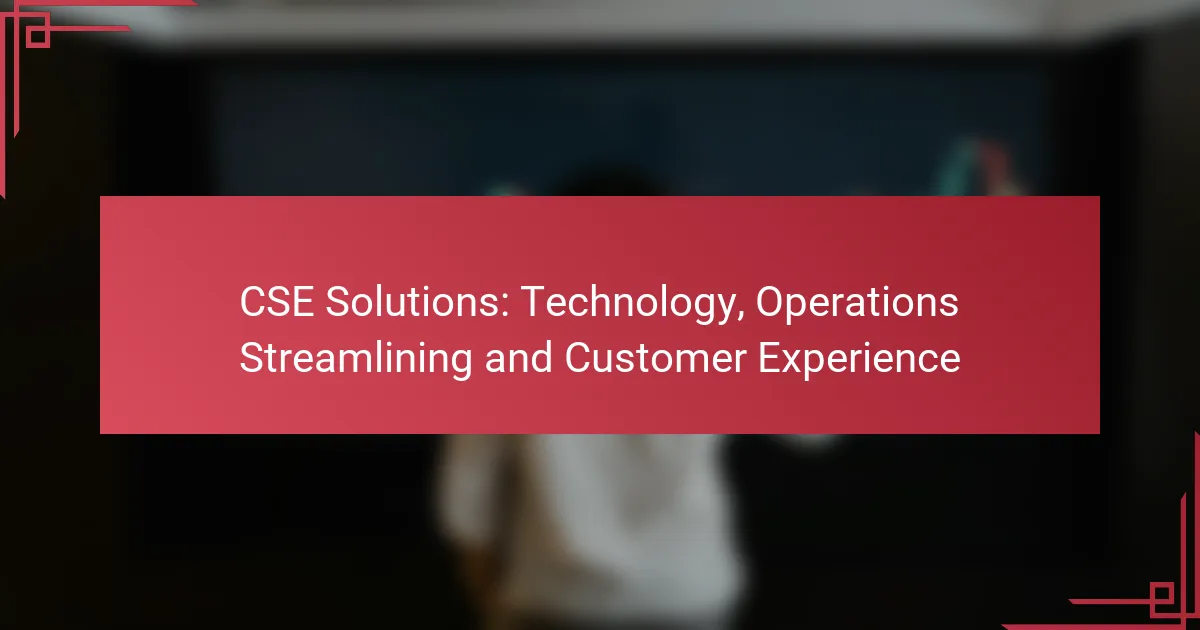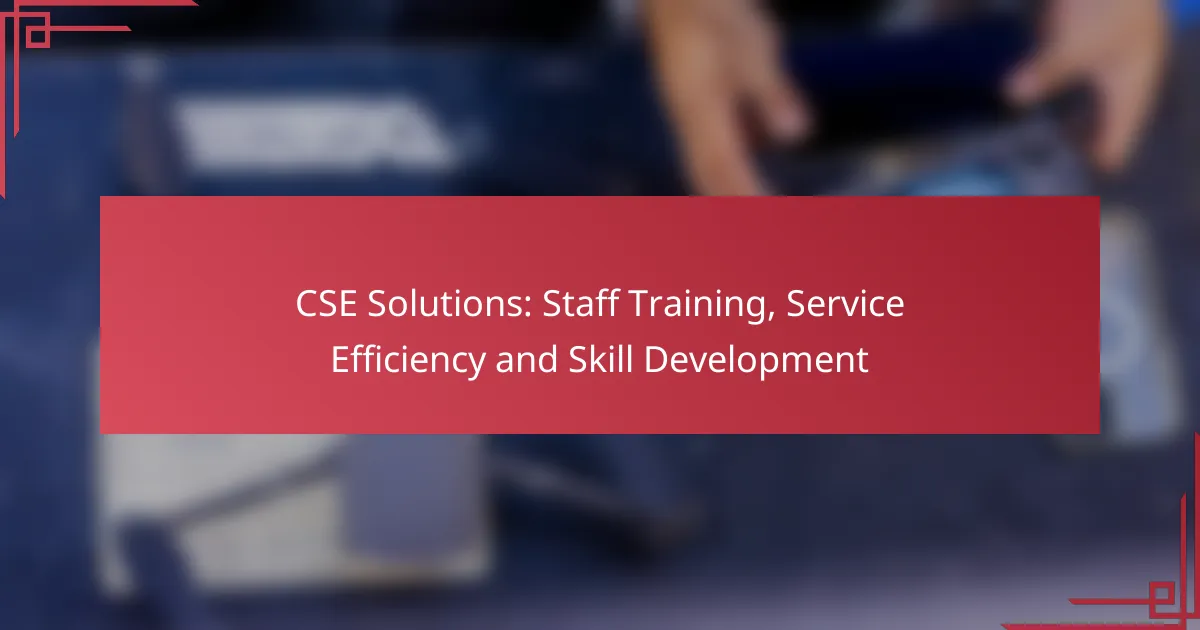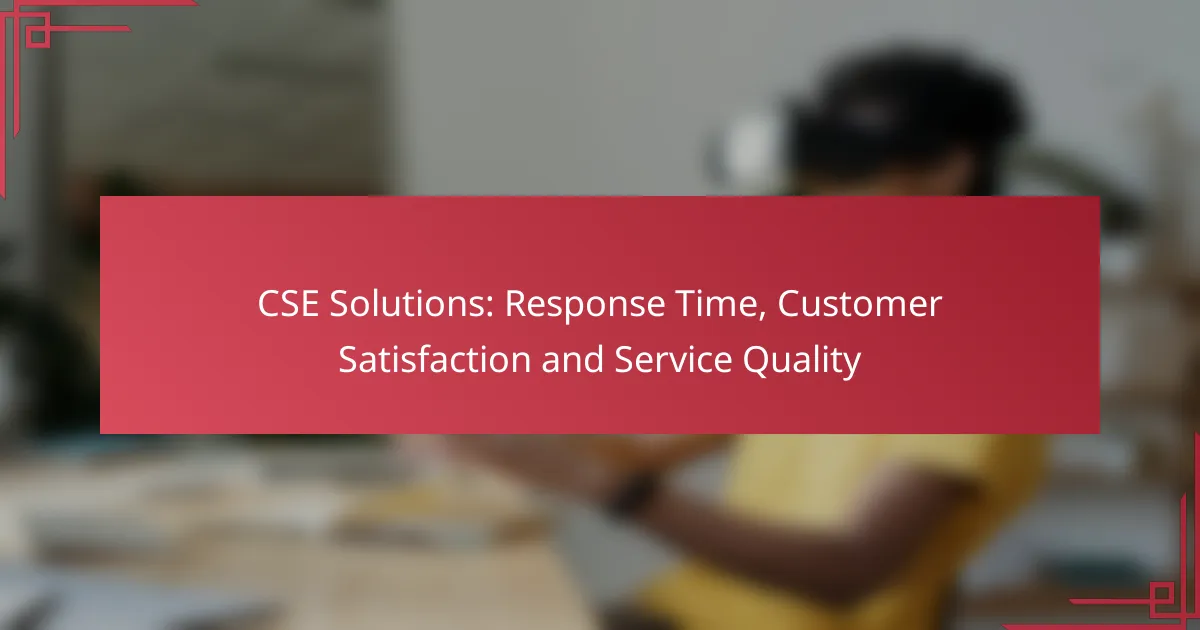CSE solutions in the UK leverage advanced technology to streamline operations and enhance customer experience. By automating repetitive tasks and providing real-time data insights, these solutions enable businesses to operate more efficiently while improving customer satisfaction through tailored interactions and faster responses.

What CSE solutions enhance technology in the UK?
CSE solutions in the UK significantly improve technology by integrating advanced tools that streamline operations and enhance customer experience. These solutions focus on automation, data management, and security, allowing businesses to operate more efficiently and respond better to customer needs.
Cloud-based platforms
Cloud-based platforms provide scalable resources that enable businesses to manage operations remotely and securely. They allow for easy access to applications and data from anywhere, which is crucial for maintaining productivity in a flexible work environment.
When selecting a cloud solution, consider factors such as compliance with UK data protection regulations and the ability to integrate with existing systems. Popular options include Microsoft Azure and Amazon Web Services, which offer a range of services tailored to different business needs.
AI-driven analytics
AI-driven analytics enhance decision-making by providing insights derived from large datasets. These tools analyze customer behavior, market trends, and operational efficiency, enabling businesses to make data-informed decisions that improve service delivery.
Implementing AI analytics involves choosing the right software that aligns with your business goals and ensuring staff are trained to interpret the data effectively. Solutions like Google Analytics and Tableau can help visualize data trends and support strategic planning.
Automation tools
Automation tools streamline repetitive tasks, freeing up employee time for more strategic activities. These tools can range from simple scheduling software to complex robotic process automation (RPA) systems that handle data entry and customer interactions.
When adopting automation, assess which processes can be automated without compromising quality. Tools like Zapier and UiPath can help businesses automate workflows efficiently, reducing errors and increasing productivity.
Data integration services
Data integration services facilitate the seamless flow of information between different systems, ensuring that all departments have access to the same up-to-date data. This is essential for maintaining consistency and accuracy across operations.
Consider using integration platforms like MuleSoft or Dell Boomi, which can connect various applications and databases. Ensure that the chosen service complies with UK data regulations to protect sensitive information.
Cybersecurity solutions
Cybersecurity solutions are vital for protecting sensitive customer data and maintaining trust. These solutions include firewalls, intrusion detection systems, and encryption technologies that safeguard against cyber threats.
Investing in robust cybersecurity measures is essential, especially with increasing regulations like GDPR in the UK. Regularly updating security protocols and training employees on best practices can significantly reduce the risk of data breaches.

How do CSE solutions streamline operations?
CSE solutions streamline operations by automating repetitive tasks, improving workflow efficiency, and enabling real-time data insights. These technologies help businesses reduce operational costs, enhance productivity, and ultimately improve customer satisfaction.
Process automation
Process automation involves using technology to perform tasks without human intervention, which can significantly reduce errors and save time. For example, automating customer support ticketing can lead to faster response times and fewer missed inquiries.
Common tools for process automation include robotic process automation (RPA) software and workflow automation platforms. Businesses should assess which processes are most repetitive and time-consuming to prioritize for automation.
Workflow management systems
Workflow management systems (WMS) help organizations design, execute, and monitor workflows to enhance operational efficiency. These systems allow teams to visualize tasks, assign responsibilities, and track progress in real-time.
Implementing a WMS can lead to improved collaboration and accountability. Companies should choose a system that integrates well with existing tools and provides customizable features to fit their specific needs.
Real-time data tracking
Real-time data tracking enables businesses to monitor key performance indicators (KPIs) as they occur, facilitating quick decision-making. This capability is crucial for identifying issues and opportunities promptly, allowing for proactive adjustments.
Utilizing dashboards and analytics tools can enhance visibility into operations. Companies should focus on tracking metrics that align with their strategic goals to ensure relevant insights are prioritized.
Resource allocation optimization
Resource allocation optimization involves strategically distributing resources—such as personnel, budget, and time—to maximize efficiency and effectiveness. This process ensures that the right resources are available where and when they are needed most.
Tools like resource management software can assist in visualizing resource availability and workload. Organizations should regularly review and adjust allocations based on project demands and performance outcomes to maintain optimal efficiency.

What impact do CSE solutions have on customer experience?
CSE solutions significantly enhance customer experience by providing tailored interactions, faster responses, and comprehensive support across various channels. These technologies streamline operations, enabling businesses to meet customer needs more effectively and efficiently.
Personalized service delivery
Personalized service delivery involves customizing interactions based on individual customer preferences and behaviors. By leveraging data analytics, companies can tailor recommendations, offers, and support to each customer, creating a more engaging experience.
For example, a retail company might use purchase history to suggest relevant products, increasing the likelihood of additional sales. Implementing customer segmentation strategies can further enhance personalization, allowing businesses to cater to different demographics effectively.
Improved response times
Improved response times are crucial for enhancing customer satisfaction. CSE solutions automate routine inquiries and streamline workflows, allowing customer service representatives to focus on more complex issues.
Many businesses aim for response times in the low single-digit minutes for initial inquiries. Utilizing chatbots for basic questions can significantly reduce wait times, ensuring customers receive timely assistance and feel valued.
Enhanced customer feedback loops
Enhanced customer feedback loops enable businesses to gather and analyze customer insights continuously. CSE solutions facilitate real-time feedback collection through surveys, social media, and direct interactions, allowing companies to adapt quickly to customer needs.
For effective feedback loops, companies should implement regular check-ins and follow-ups after service interactions. This practice not only shows customers that their opinions matter but also helps identify areas for improvement.
Omnichannel support
Omnichannel support ensures customers can engage with a business through multiple channels seamlessly. CSE solutions integrate various communication platforms, such as email, chat, and social media, providing a consistent experience regardless of the channel used.
To implement effective omnichannel support, businesses should ensure that customer data is synchronized across all platforms. This allows representatives to access complete customer histories, enabling them to provide informed and cohesive support.

What criteria should businesses consider when choosing CSE solutions?
Businesses should evaluate scalability, integration capabilities, cost-effectiveness, and user-friendliness when selecting Customer Service Experience (CSE) solutions. These factors ensure that the chosen technology aligns with operational needs and enhances customer interactions.
Scalability
Scalability refers to the ability of a CSE solution to grow alongside your business. A scalable system can handle increasing volumes of customer interactions without a drop in performance. Look for solutions that offer flexible pricing models and can accommodate additional users or features as your business expands.
Consider cloud-based solutions, which often provide better scalability compared to on-premises systems. They allow for easy adjustments in resources, enabling businesses to respond quickly to changing demands.
Integration capabilities
Integration capabilities determine how well a CSE solution can connect with existing systems and tools. A solution that easily integrates with your Customer Relationship Management (CRM), marketing platforms, and other software can streamline operations and enhance data flow.
Evaluate whether the CSE solution supports APIs or has pre-built connectors for popular applications. This will reduce the time and cost associated with implementation and ensure a seamless user experience across platforms.
Cost-effectiveness
Cost-effectiveness involves assessing the total cost of ownership of a CSE solution, including initial setup, ongoing maintenance, and potential hidden costs. Businesses should compare pricing structures, such as subscription fees versus one-time payments, to determine the best fit for their budget.
Consider the return on investment (ROI) by analyzing how the solution can improve efficiency and customer satisfaction. A solution that enhances productivity and reduces customer churn can justify higher upfront costs.
User-friendliness
User-friendliness is crucial for ensuring that both employees and customers can easily navigate the CSE solution. A system with an intuitive interface can reduce training time and increase adoption rates among staff.
Look for features like customizable dashboards, easy access to support resources, and clear documentation. Conducting user testing or gathering feedback from potential users can help identify solutions that meet usability standards effectively.



